The harmonic minor scale is a fascinating and intricate element of music theory that resonates deeply within the world of music production.
It can transform the emotional landscape of a composition, give your songs a unique character, and unlock new avenues of creativity.
As a music producer, knowing all about the harmonic minor scale is indispensable to harnessing its full potential and creating distinctive soundscapes.
It can also help you elevate your musical creations to a professional level.
In today’s article, we’ll break down:
- Understanding the basics of the harmonic minor scale ✓
- Characteristics that set the harmonic minor apart ✓
- Its crucial role in modern music production ✓
- The impact of scale degrees and intervals ✓
- How chords and progressions are influenced ✓
- Exploring specific harmonic minor scales ✓
- Comparative insights with major & other minor scales ✓
- Key signatures and notation specifics ✓
- Modes and degrees within the scale ✓
- Advanced concepts in melody and harmonization ✓
- Much more ✓
By the end of this article, you’ll not only grasp the theoretical aspects of the harmonic minor scale but also be equipped to incorporate it into your beats like a professional.
You’ll be able to master its complexities and utilize its unique qualities to enhance mood, texture, and emotion in your music.
So, let’s dive in…
Table of Contents
- The Basics of Harmonic Minor
- The Role of the Harmonic Minor in Music Production
- Key Components of the Harmonic Minor Scale
- Relationship with Melodic Minor and Minor Key Concepts
- Pt 2: Melodic Minor Scale and Natural Minor Scale
- Diving into Specific Harmonic Minor Scales
- The Unison Harmonic Minor (Baroque) Advanced MIDI Scales Collection
- Bonus: Major Scales
- Harmonic Minor Scale: Final Thoughts
The Basics of Harmonic Minor
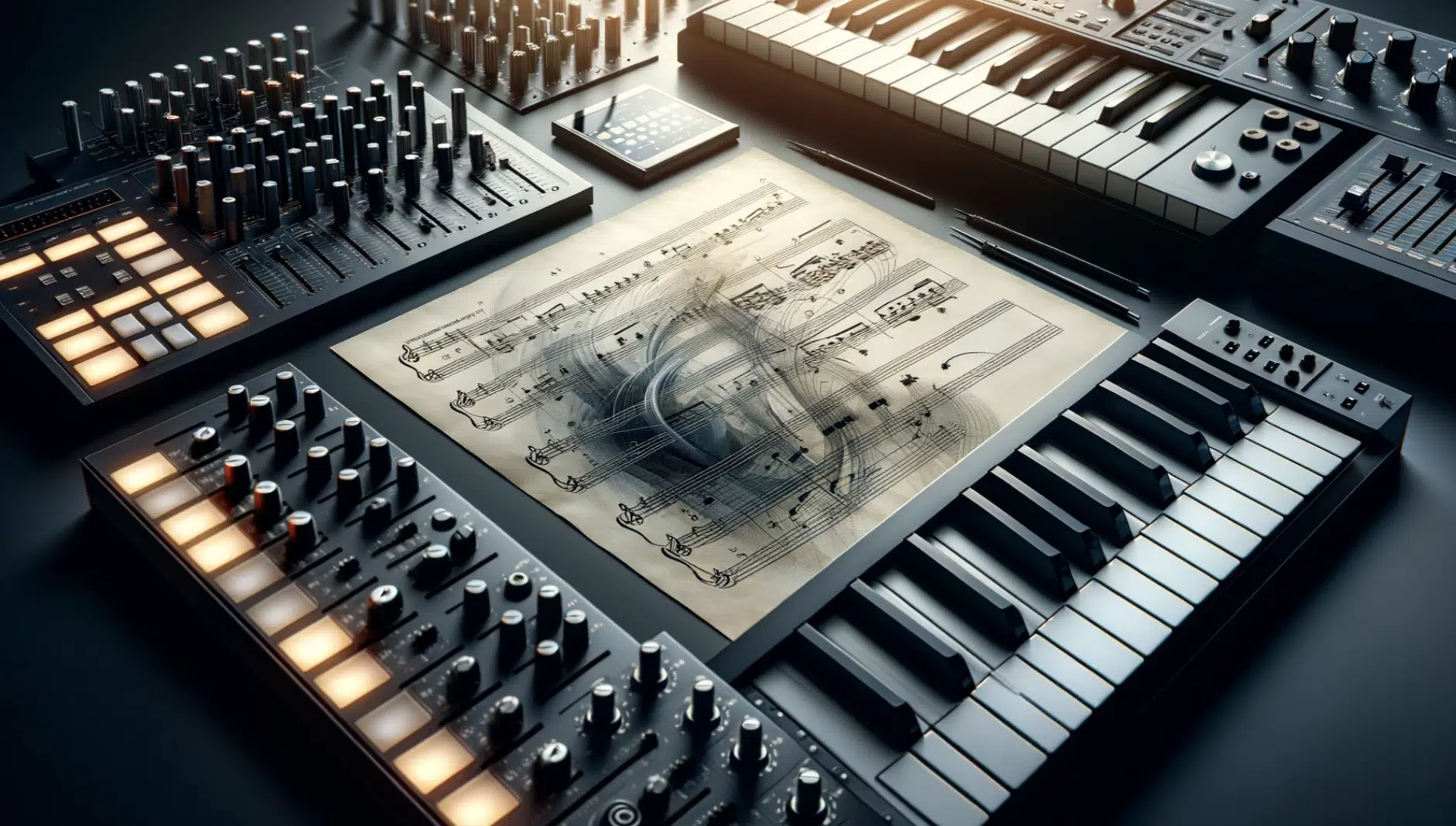
The harmonic minor scale is pivotal for any music producer.
It’s formed by raising the seventh degree of the natural minor scale, a subtle yet powerful alteration.
This raised seventh (or leading tone) brings a sense of tension and resolution, crucial in creating legendary music.
Understanding the harmonic minor is not just about memorizing notes but grasping its emotional impact.
In music production, the harmonic minor scale offers a unique variety of sounds.
Unlike the natural minor scale, which often sounds melancholic, the harmonic minor injects a dramatic and sometimes even mysterious quality into melodies and harmonies.
It’s this distinctiveness that makes the harmonic minor an invaluable tool.
-
Characteristics of the Harmonic Minor Scale

The harmonic minor scale’s characteristic sound primarily stems from the interval between its sixth and raised seventh degrees.
This interval, an augmented second, is key to its exotic and tense feel, which is a delightful contrast to the more consonant intervals found in natural minor scales.
The harmonic minor scale also affects:
- Chord progressions
- Harmonies
- Melodies
The raised seventh alters chord qualities within the scale 一 introducing more dominant chords and diminished chords.
These other chords contribute to a more dynamic and expressive harmonic landscape, essential in music production for creating depth and interest.
Plus, the harmonic minor scale impacts melody creation, allowing for more expressive and emotionally charged melodic lines.
NOTE: This scale is particularly favored in genres like classical, jazz, and even some forms of rock and electronic music.
It showcases its versatility and importance in a broad spectrum of musical styles.
The Role of the Harmonic Minor in Music Production
In digital music production, the harmonic minor scale is a powerful tool. Its usage extends beyond traditional music theory, offering modern producers a way to add complexity and distinctiveness to their compositions.
-
The Harmonic Minor Scale in Digital Music
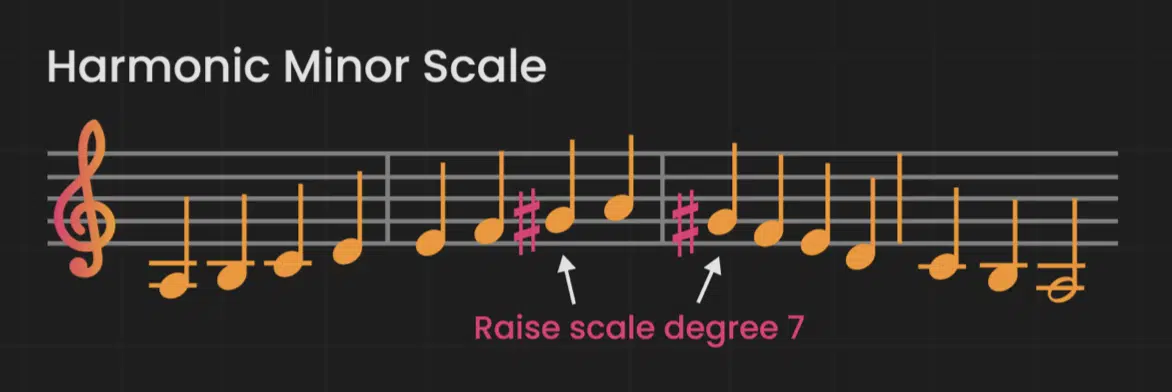
In digital music production, the harmonic minor scale proves to be incredibly versatile.
Whether you’re creating a haunting electronic track or a dynamic rock piece, the harmonic minor scale provides a unique sonic quality that can set your music apart.
Producers often use it to:
- Create lead melodies
- Add a surprising twist in a bridge or chorus
The beauty of the harmonic minor scale in digital music lies in its ability to blend with electronic sounds.
Its distinctive tonality complements synthetic timbres well 一 making it a favorite among music producers looking to create atmospheric or emotionally charged music.
Its adaptability in various digital instruments and effects further solidifies its place in modern music production.
-
Harmonic Minor and Mood Creation
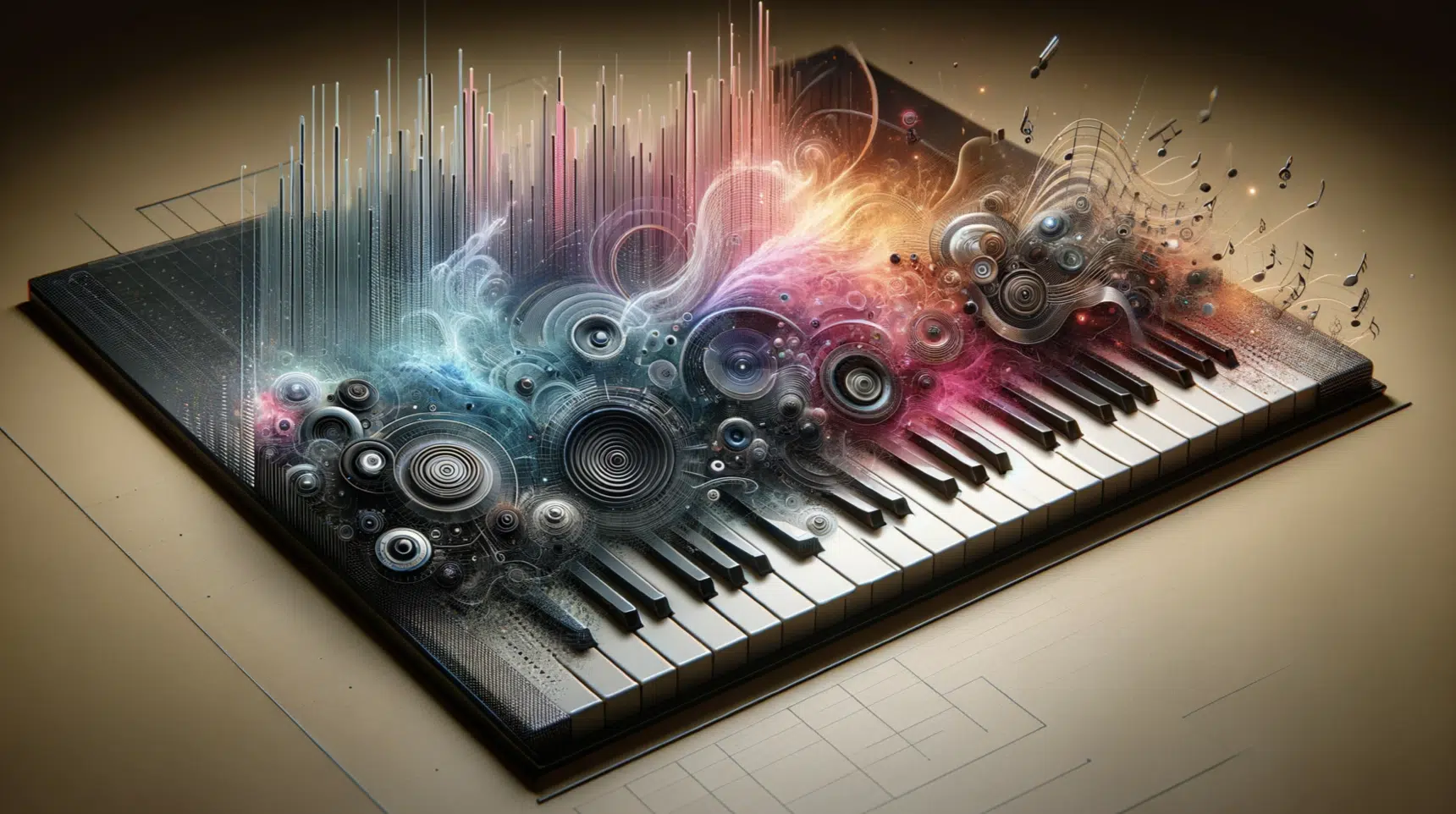
The harmonic minor scale excels in mood creation, as its unique intervals can evoke feelings of:
- Mystery
- Tension
- Drama
This makes the harmonic minor scale ideal for setting a particular emotional tone.
This is especially useful in soundtrack production, where the mood is the determining factor.
Furthermore, the harmonic minor scale can transform a simple chord progression into something more intriguing.
By simply altering one note, you change the entire emotional landscape of a piece.
If you’re looking to create music that resonates on a deeper emotional level, this scale is an invaluable tool.
Key Components of the Harmonic Minor Scale
The harmonic minor scale is more than just a series of the same notes 一 it’s a framework for creativity. Its components, from scale degrees to chord progressions, open up a world of possibilities in music production.
-
Scale Degrees and Intervals

Each degree of the harmonic minor scale plays a crucial role in its overall sound.
The first degree, or tonic, establishes the key, while the raised seventh scale degree creates tension, urging a resolution back to the tonic chord.
This tension and release are fundamental to the scale’s emotional impact, all accomplished with the scale degree.
Aside from the scale degree, intervals in the harmonic minor scale are equally important.
The unique augmented second interval between the sixth and seventh degrees gives the scale its distinctive sound.
Understanding these intervals is key to effectively using the harmonic minor scale in your compositions.
PRO TIP
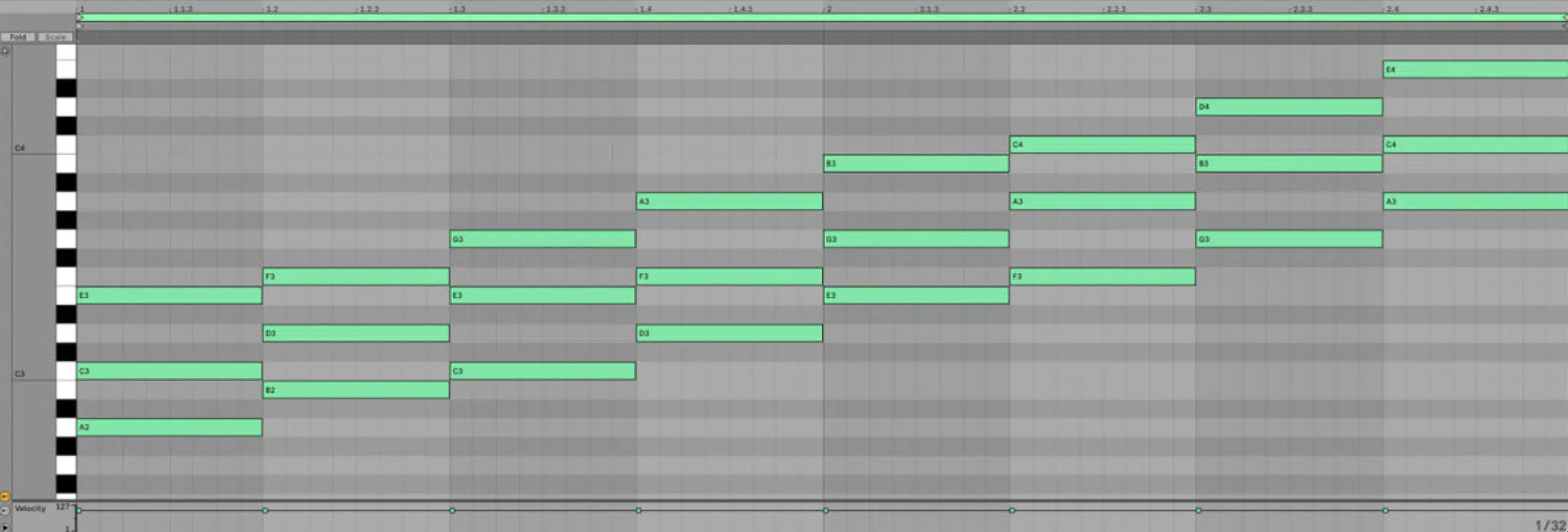
Chord progressions using the harmonic minor scale can be rich and complex.
The scale’s raised seventh degree opens up a variety of chord possibilities, including:
- Augmented chords
- Diminished chords
These chords can add a dramatic flair to chord progressions 一 making them more engaging and memorable.
In the harmonic minor scale, augmented triads, which are less familiar in two scales like the major and natural minor, emerge uniquely.
For example, an augmented triad offers a distinct sound that challenges you to think about notes and chord progressions in the same way they would in more conventional scales.
-
Chord Qualities

The chord qualities derived from the harmonic minor scale are varied and expressive.
From the minor tonic to the major V chord, each chord has its own character and emotional weight.
Understanding these qualities is essential for crafting harmonically rich music.
The use of diminished and augmented chords (common in the harmonic minor scale) adds a layer of sophistication to a track.
These chords, often perceived as unstable or tense, can lead to more dramatic and impactful resolutions, especially in a digital music production context.
The harmonic minor scale’s ability to shift from somber to intense emotions through its chord qualities makes it a dynamic tool for any producer or artist.
-
Key Signatures and Notation

The key signatures of the harmonic minor scale can vary, depending on the root note.
Understanding these key signatures is crucial for:
- Accurately notating
- Interpreting music in this scale
This knowledge of key signatures is especially important when collaborating with other musicians or when transitioning between different sections of a piece.
Proper notation ensures that the unique qualities of the harmonic minor scale are effectively communicated and executed.
Additionally, digital music producers like yourself must be adept at translating these key signatures into their software and hardware.
This key signature skill is vital for creating accurate and expressive compositions in the harmonic minor scale.
It allows for seamless integration of this scale into various digital formats.
-
Scale Modes
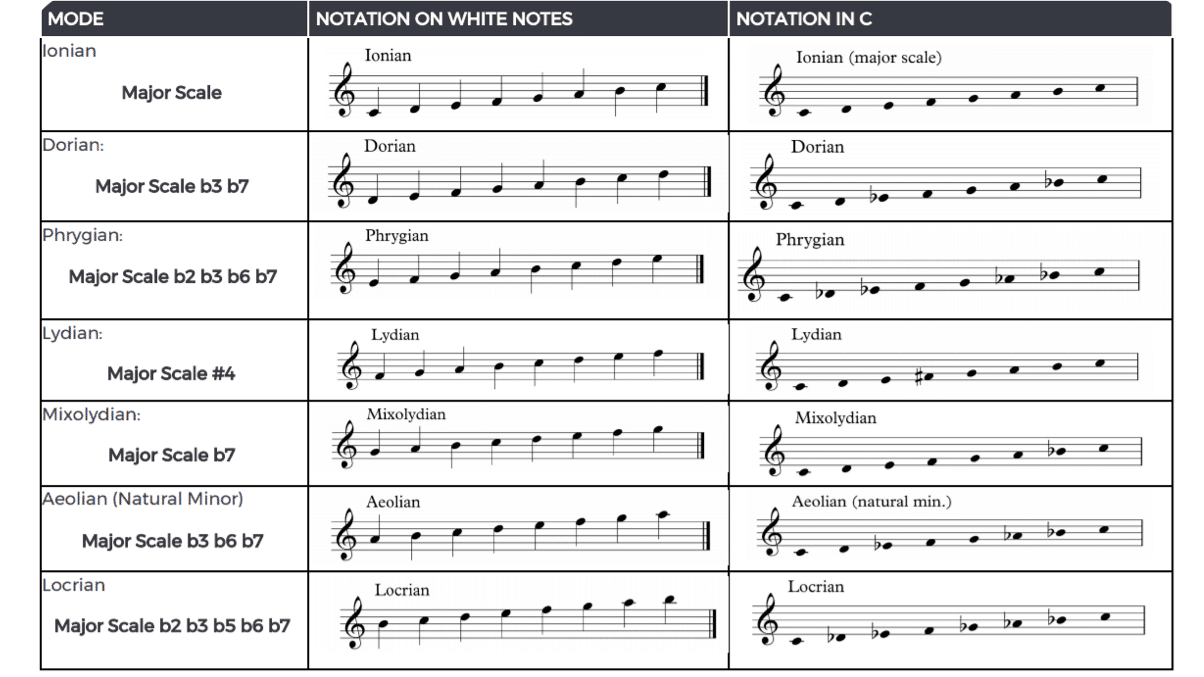
The seven modes of the harmonic minor scale each have their own distinctive sound and function.
These scale modes, derived from different starting points on the scale, offer a range of harmonic and melodic possibilities.
Understanding these seven modes is crucial for producers looking to add complexity and variety to their music.
Each degree of the harmonic minor scale contributes to its overall character.
The unique intervals, especially the augmented second between the sixth and seventh degrees, are fundamental to the scale’s exotic and tension-filled sound.
Mastering these scale degrees allows producers to craft more nuanced and emotionally resonant music.
Relationship with Melodic Minor and Minor Key Concepts
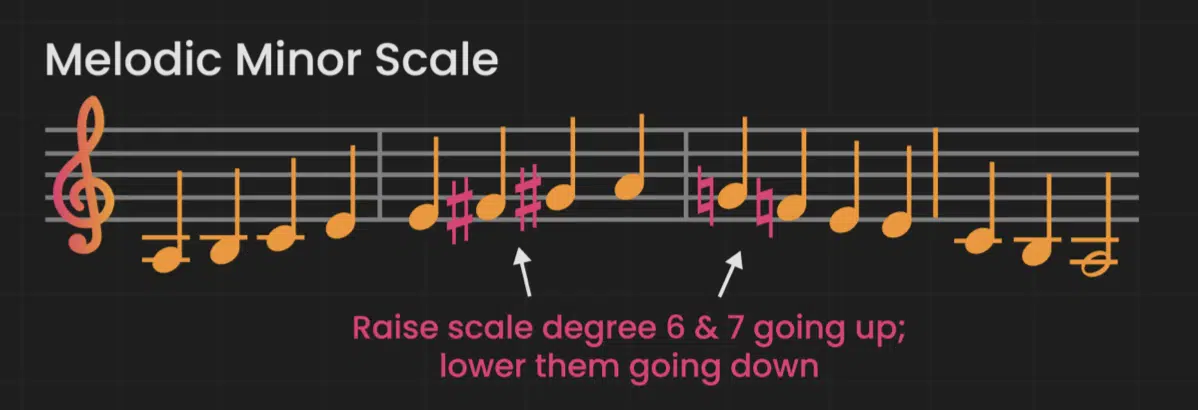
The harmonic minor scale is closely related to other key concepts in music theory, particularly with melodic minor scales and minor keys.
In the context of minor keys, the harmonic minor scale provides a sense of completeness and resolution.
This is especially true when contrasted with the descending melodic minor scale.
This descending scale (descending form) often reverts to the natural minor scale 一 highlighting the distinctive raised seventh of the harmonic minor when it ascends again.
Understanding the relative minor is crucial in music production.
The relative minor of any major key can be found by locating its sixth scale degree, which forms the root note of the relative minor key.
This concept is essential when working with harmonic minor scales, as it offers a deeper comprehension of key relationships and their emotional impacts.
The melodic minor scale, especially in its ascending form, shares similarities with the harmonic minor but differs in its sixth and seventh degrees.
This difference is critical when crafting a minor chord progression or when using a descending scale in a composition.
The melodic minor scales, in their ascending and descending forms, provide an interesting contrast to the consistent structure of the harmonic minor.
Pt 2: Melodic Minor Scale and Natural Minor Scale

The melodic minor scale, which differs from the harmonic minor scale in its sixth and seventh degrees, offers a smoother and less tense sound.
The natural minor scale, on the other hand, provides a more subdued and melancholic whole tone compared to the dramatic flair of the harmonic minor.
Understanding the nuances between the minor minor scale and natural minor scale can help you make informed choices in your compositions.
The harmonic minor scale (like the E harmonic minor scale or F harmonic minor scale), with its unique tension and resolution, is often chosen for its emotional impact and distinctiveness.
So, make sure to be familiar with the melodic minor scale and natural minor scale for show-stopping compositions.
Diving into Specific Harmonic Minor Scales
Exploring individual harmonic minor scales reveals their unique characteristics and applications. Each has its own flavor and can be used to evoke different emotions and atmospheres in music production.
-
E Harmonic Minor Scale
The E harmonic minor scale is known for its somber yet expressive quality.
In music production, it’s frequently used in genres that require a deep, emotional undercurrent.
The leading tone of the E harmonic minor scale sharply rises to the tonic note 一 creating a sense of longing and unresolved tension.
The E harmonic minor scale can be utilized to create compelling melodies and rich harmonic structures.
Its distinctive sound works well in electronic music and energetic pop music, offering a contrast to the often bright and upbeat major scales.
-
G Harmonic Minor Scale
The G harmonic minor scale offers a different palette, often associated with mystery and intrigue.
Its unique tonal quality is perfect for creating suspenseful or exotic sounding beats.
In digital music production, the G harmonic minor can add a twist to traditional chord progressions 一 giving them a fresh and unconventional sound.
Producers often turn to the G harmonic minor scale for its ability to infuse tracks with a distinct mood.
This scale provides a depth of emotion that can elevate a composition.
-
D Harmonic Minor Scale
The D harmonic minor scale is known for its dramatic flair.
This scale is particularly effective in compositions that require a powerful and intense sound.
In music production, it’s often used in cinematic scores and progressive rock, where its dramatic qualities can be fully utilized.
The D harmonic minor scale is particularly adept at creating powerful leads and compelling harmonic progressions.
Its use in digital instruments can bring richness and complexity to a track.
-
C Harmonic Minor Scale
The C harmonic minor scale is versatile and expressive, often used in music that requires a blend of melancholy and sophistication.
This scale is a favorite in jazz and classical music but has found its way into modern electronic and pop productions as well.
In music production, the C harmonic minor scale can be used to create intricate chord progressions and melodies.
Its unique intervals provide a rich harmonic foundation 一 allowing for creative exploration and expression.
The Unison Harmonic Minor (Baroque) Advanced MIDI Scales Collection
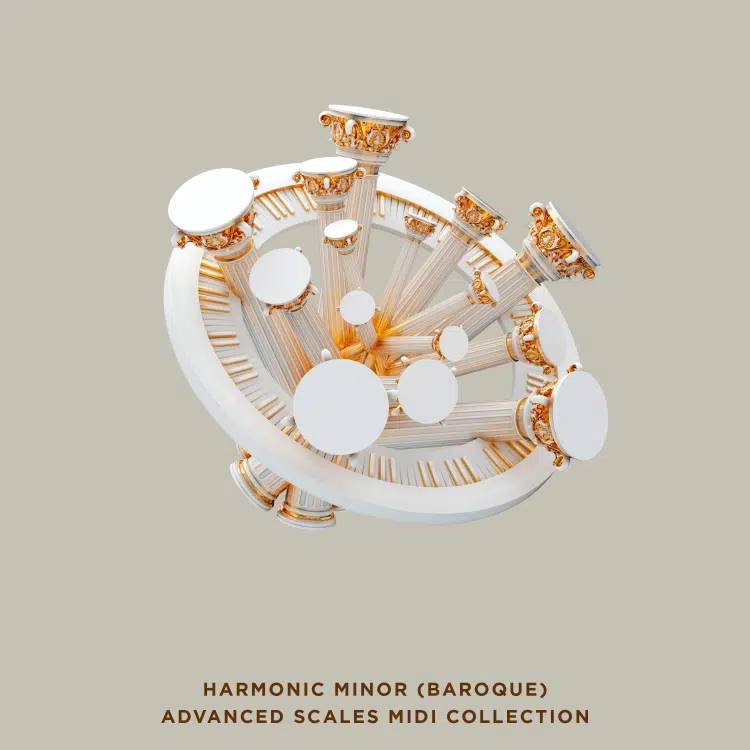
Unison Audio’s Harmonic Minor (Baroque) Advanced MIDI Scales Collection is an innovative toolkit designed to revolutionize music production.
This invaluable collection features over 1,100 harmonic minor MIDI:
- Scales
- Chords
- Progressions
- Melodies
It can help you not only understand the harmonic minor scale, but produce show-stopping music with ease.
Championed historically by musical giants like Mozart and Beethoven, the harmonic minor scale now serves as a secret weapon for the industry’s elite producers.
By using this collection, producers can access a scale that is rarely explored by the average music creator 一 offering an edge in the highly competitive field of modern music production.
This MIDI pack is meticulously engineered by analyzing the harmonic minor scale’s application in hit songs across various platforms, including Billboard and Spotify.
The versatility of MIDI format means these scales, chords, progressions, and melodies can be seamlessly integrated into projects, tailored to fit individual styles.
This collection ensures that your beats not only stand out but also resonate with a level of sophistication and innovation, just like the top industry producers.
Bonus: Major Scales
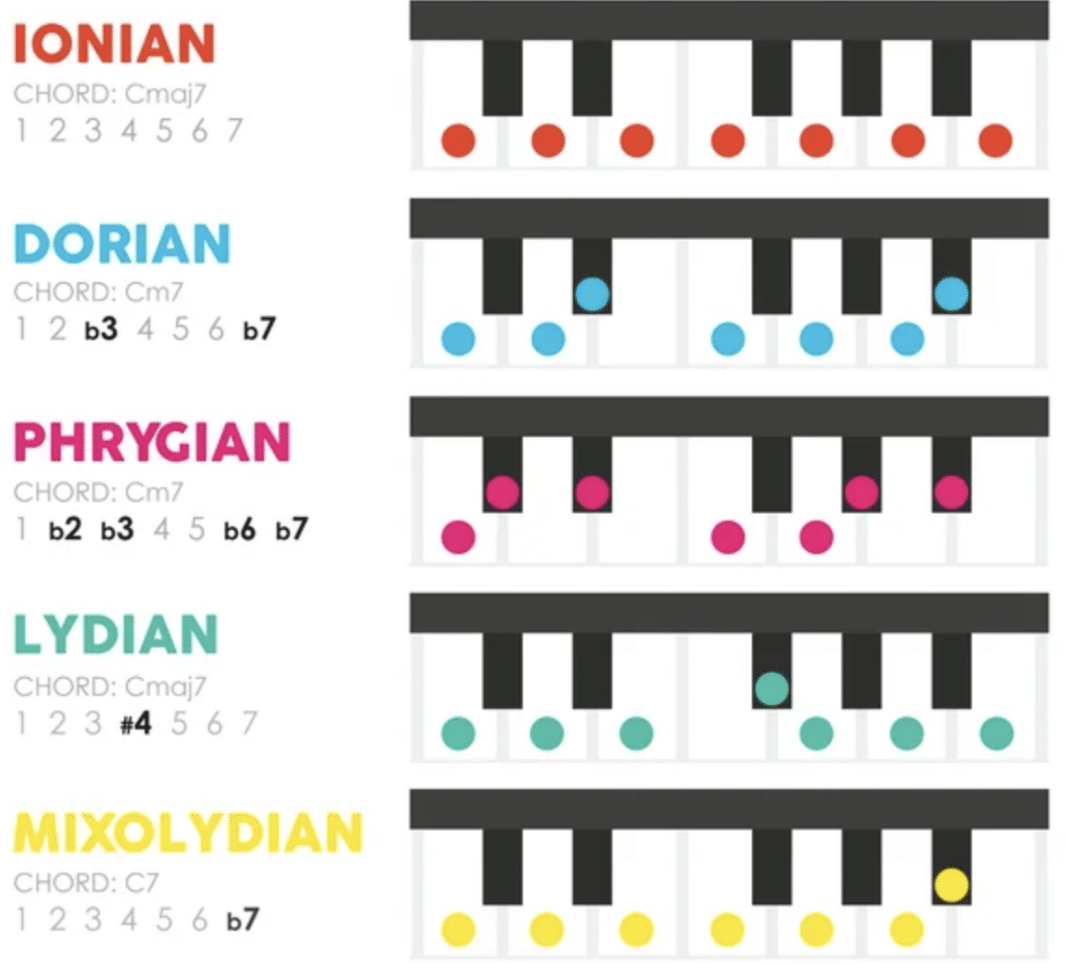
Major scales are often associated with bright and happy emotions, in contrast to the more complex and emotional sound of the harmonic minor scale.
For example, the major scale (like C major) would be used in an uplifting pop or trap track.
The harmonic minor scale, with its raised seventh, brings a level of drama and intensity that the major scale/major chord typically lacks.
Understanding the harmonic minor scale in relation to major scales is essential for:
- Effective key modulation
- Thematic development in music production
When a piece modulates from a major key to its relative harmonic minor (or vice versa) it creates a compelling narrative and tonal journey.
This diversity between the minor and major scale showcases your technical prowess and your ability to weave complex emotional tapestries through music.
Harmonic Minor Scale: Final Thoughts
As we wrap up our exploration of the harmonic minor scale, it’s evident how vital this knowledge is for any music producer seeking to excel in the industry.
The intricacies of the harmonic minor scale are more than just theoretical concepts.
They are essential tools for creative expression and innovation in music.
Understanding the harmonic minor scale is not just about expanding your musical vocabulary 一 it’s about unlocking emotional depth and sophistication in your beats.
Whether you’re crafting haunting melodies, rich chord progressions, or dynamic arrangements, the harmonic minor scale offers a distinctive sound that can set your music apart.
It’s a scale that has shaped genres, defined eras and continues to influence the modern music landscape.
As you continue on your music production journey, keep in mind the power and versatility of the harmonic minor scale.
Embrace its complexities, experiment with its possibilities, and let it inspire your musical creations.
Until next time…







Leave a Reply
You must belogged in to post a comment.